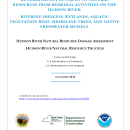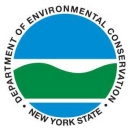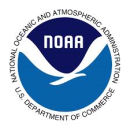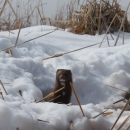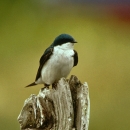This case addresses natural resource injuries that have occurred due to the release of polychlorinated biphenyls (PCBs) to the Hudson River, primarily from General Electric's Hudson Falls and Fort Edward, New York, manufacturing plants.
Federal and state trustee agencies (New York State, the U.S. Department of Commerce, and the U.S. Department of the Interior) are studying the effects of the PCB contamination in the Hudson River through a process known as Natural Resource Damage Assessment (NRDA).
The Trustees’ goal is to represent the interest of the public by measuring injuries to the natural resources of the Hudson River and its ecosystem, and determining how much restoration is necessary to address this harm.
Current Phase and Next Steps
The Hudson River Trustees are currently in the Assessment phase of the Hudson River damage assessment. This phase can take many years. Assessment includes injury determination, injury quantification, and damage determination. Damages are measured in terms of the cost of restoration, rehabilitation, replacement, and/or acquisition of the equivalent of the injured resources and their services.
Restoration implementation can begin after the case is resolved and funds for restoration work are available to the Trustees.
Case Documents
The case documents are publicly available documents and materials the Trustees rely on or consider in the decision-making process for NRDA. Materials are added on an ongoing basis. All documents relevant to the Hudson River Natural Resource Damage Assessment can be found on the Trustees' Case Documents website: www.diver.orr.noaa.gov/web/guest/diver-admin-record/6306
Stay updated
The Hudson River Natural Resource Trustees provide periodic email updates on the ongoing natural resource damage assessment and restoration efforts for the Hudson River. Please email Margaret_Byrne@fws.gov with the subject line: "Add to Hudson River NRDAR Email Updates" to subscribe.

